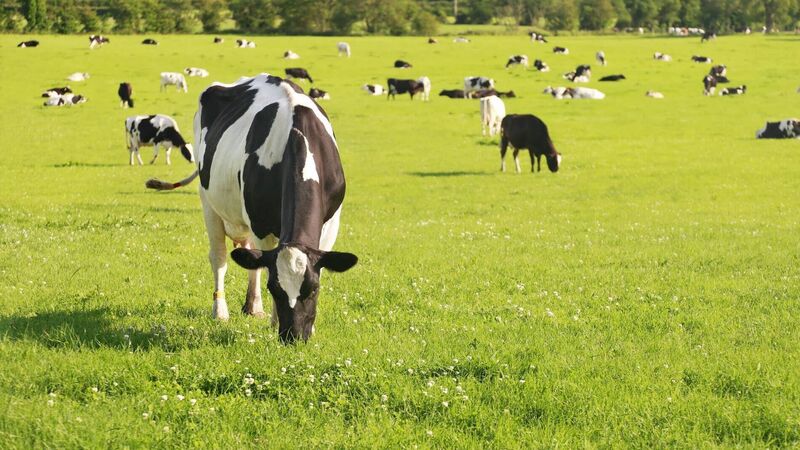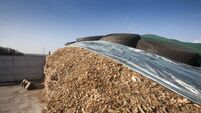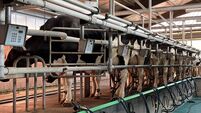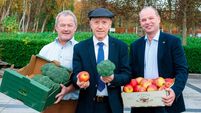Brian Reidy: When you're early grazing, don’t forget about the cow

First-round grass is typically lower in energy and protein, and farmers are reporting that even if they go to grass for a few hours, their herd continues to eat the same amount of feed as when they were full-time.
Many dairy farmers have their milkers out by day for a few hours when conditions allow - it's worth doing to get some paddocks grazed so you encourage the next growth.
Hopefully, the weather will allow this to be the norm going forward this spring. None of us want anything like the spring we had in 2024.
It is particularly important at this time of year that livestock farmers have an appreciation of the quantity and quality of grass that is available to their cows and cattle.
The first rotation of grazing is usually the highest dry matter, highest fibre, lowest energy and lowest protein of any grazing throughout the year. This spring, grass quality is as normal with Dry Matters or 18-20% and in the region of 4-5kg DM winter growth reported recently.
Any grass I have walked where cows are grazing has a hungry look about it after the snow and colder days recently. It could do with some feeding now from slurry or some Nitrogen.
First-round grass is typically lower in energy and protein, and farmers are reporting that even if they go to grass for a few hours, their herd continues to eat the same amount of feed as when they were full-time.
This will be down to two reasons, one being their intakes are increasing as they go further into their lactation and secondly, because they are not conditioned to consume large volumes of grass just yet. It is worth remembering that grass is an ingredient like any other and needs appropriate balancing from time to time in order to optimise performance.
Obviously, every production system is different, and every farmer and their land type are variable too. Cows are individuals too, but one thing for certain is that how you manage cows in the dry period followed by the transition to milking will determine her performance for the entire lactation.
Where possible, fresh cows really should not be thrown straight out to grass for the full day immediately after calving. Research from all over the world has shown that ruminants take 21 days to get used to a new diet.
This means that the rumen bug population requires 21 days to be up to speed with digesting new ingredients and combinations of ingredients.
A drafting facility is ideal in this circumstance as it reduces the stress for man and beast of manual separating. If drafting is available, then all cows can be housed together but separated after morning milking.
This strategy is great at transitioning fresh cows and heifers into the milking heard while gently adjusting their digestive systems to intensive grazing.
As with all first rotations, allocating too much grass will result in a lot of waste, particularly in the first few days post turn-out, as animals will tend to do a lot of walking. In heavier soils or in wet weather, animals will also drag clay around on their legs, dirtying swards. Poorly managed swards at this time of year can result in very low grass utilisation.
Monitoring fresh cows closely is a very important task at this time of year. Unfortunately, for most, this opportunity only occurs twice per day while milking as other jobs consume you, such as calving, feeding calves, bedding and cleaning calving boxes and calf pens, along with feeding heifers, dry cows and the main milking herd.
Never mind slurry, fertiliser, fencing, walking grass and putting up and taking down strip wires. The list is endless. The observation of fresh calvers easily is just another good reason why a mini maternity group for those cows calved in the last seven days is worth considering.
This is even easier if fresh cows are in small groups. Typically, a fresh cow group should be consuming 75 to 80% of the food that the group of cows calved over one week would be.
Every day a cow is calved, her intake will increase steadily. Where intakes are increasing steadily, cows are less likely to go into significant negative energy and, therefore, less likely to suffer from ketosis.
A huge benefit of keeping the cow’s energy status up is milk quality and subsequent fertility. Cows in a positive energy status will have higher milk protein and return to cycling quicker, while good intakes of fibre post-calving maintain healthy butter fat percentages. Milk yield is the most commonly monitored performance indicator and is obviously very important.
A steady increase to peak is much more preferable as it is easier for the cow to match intake with milk yield. For this to be achieved, good nutrition in early lactation is critical.
Milk Fever and cows holding cleanings seem to be a bigger issue than normal this season. Ask for help if these issues are occurring.
They need to be prevented rather than just hidden. What I mean by that is you need to adjust the dry cow diet rather than stuffing magic down cows' throats post-calving.
Mycotoxins are a real problem too this spring. Almost every silage pit has multiple hot spots just behind the face, and much of this has gone unnoticed.
Clay is also visible in a lot of grass silage pits. Variable intakes, variable dung consistency within a herd (from very watery dung to rock solid on the same diet), very lethargic cows, large incidence of mastitis, swollen legs and significant underperformance are all symptoms of a Mycotoxin problem.
A Mycotoxin binder is essential to counteract this issue. In most cases, you may not be able to see the cause of the problem with the naked eye.












